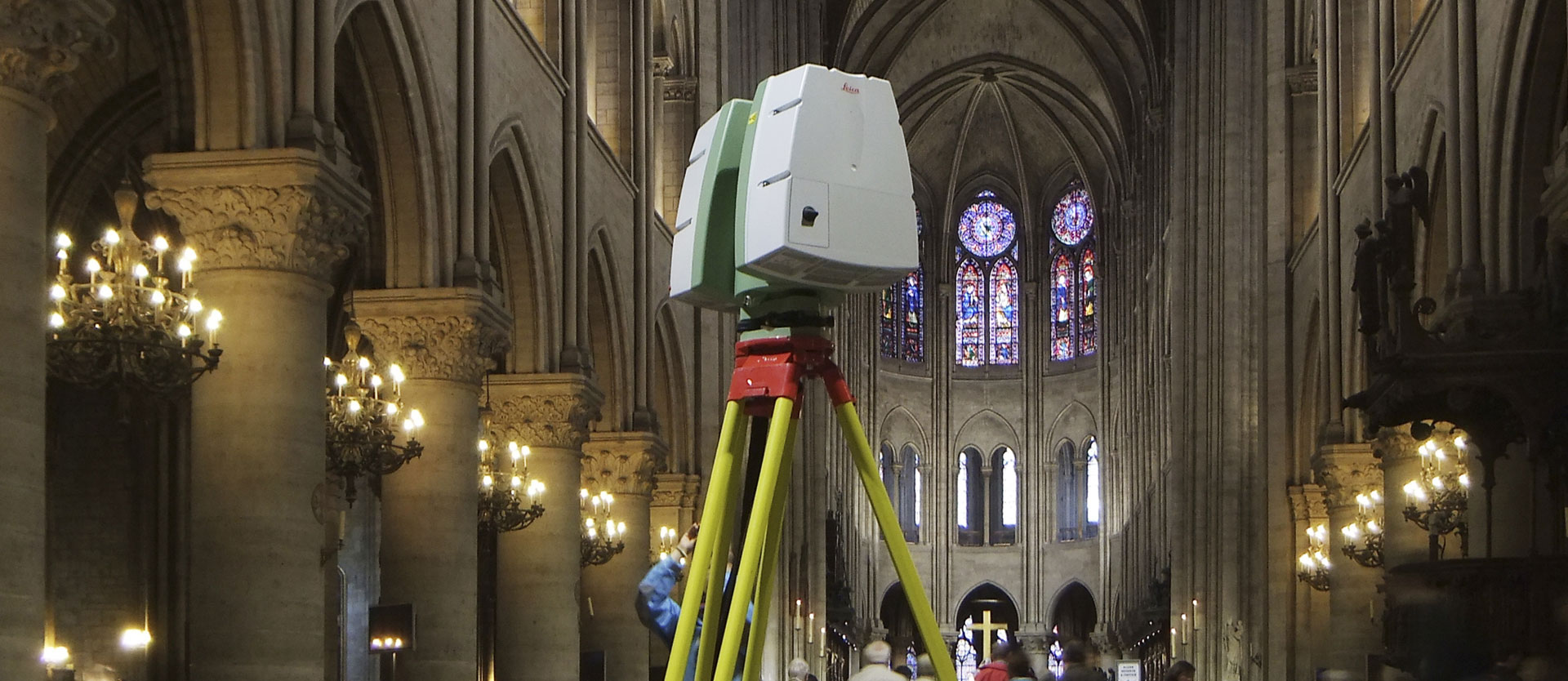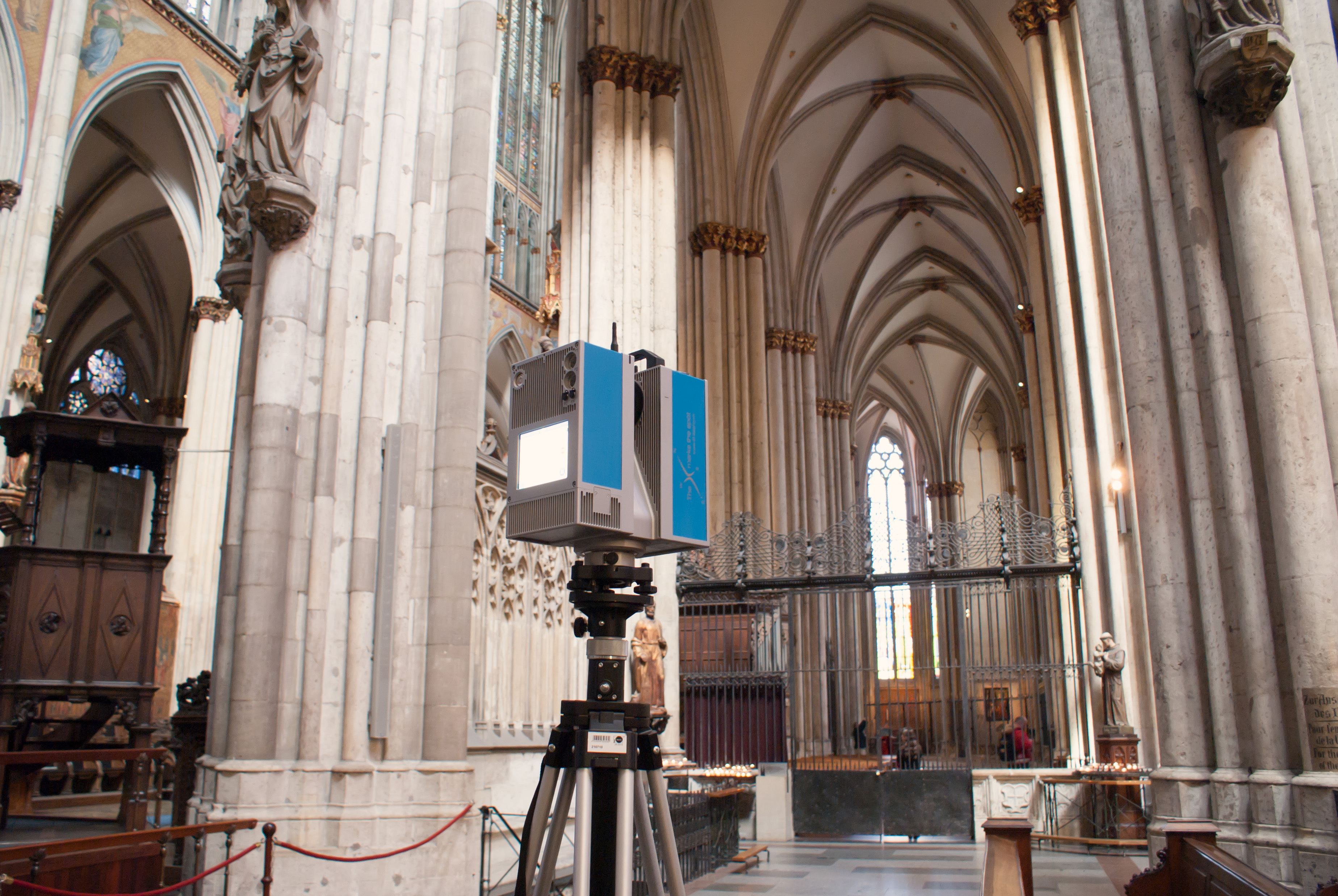
Lasers Come to the Aid of World Heritage Sites

On April 15, 2019, Parisians looked on in horror as a fire that began in the attic melted the lead roof and brought down the spire of the city’s iconic Notre Dame Cathedral. Firefighters managed to bring the blaze under control. But the ancient timbers that supported the lead roof were almost completely destroyed, and the collapse of the spire damaged the vaulted ceiling of the nave. The heat weakened the structure of the façade, and dislodged stones continued to topple into the interior long after the blaze had been extinguished, further endangering the integrity of the building.
Ten days after the fire, technical experts were able to assess the damage, and began to make plans for the reconstruction of the cathedral. Among the tools at their disposal are – lasers. In fact, the whole building had been painstakingly mapped with the help of laser scanners well before the disaster. In 2010, art historian Prof. Andrew Tallon had used a Leica ScanStation C10 to scan parts of the structure from 50 different locations. He and his team then mapped the resulting dataset, consisting of almost a billion data-points, onto a collection of panoramic photographs to create a detailed 3D model of the Gothic cathedral.
Shortly after the conflagration, 3D laser scanners were again on the scene in Notre Dame. This time, the specialists who had worked with Tallon were equipped with FARO Focus laser scanners, which were used to survey the surviving structure. Comparison of the new results with Tallon’s data enabled the team what is called a Building Information Model (BIM), which will guide the work of those charged with the renovation of the building. BIMs have become an indispensable tool in the planning of all sorts of construction projects, and the new scanning data put Notre Dame’s restorers in the best possible position to ensure that the UNESCO World Heritage Site can be rebuilt in exactly the same form as it had prior to the catastrophic fire.

The Cologne Cathedral was also mapped by laser-based scanning technologies. Photo: Zoller and Fröhlich
The cathedral on the Île de la Cité is only one of the monumental buildings that have been precisely surveyed with laser scanners. In 2015-16, an international team led by Prof. Christopher Wickenden (Fresenius University of Applied Sciences, Cologne) and Prof. Douglas Pritchard (Herriot Watt Universität, Edinburgh) documented the structure of Cologne Cathedral by coupling laser-scanning data with panorama photographs. “The survey yielded an extraordinarily detailed three-dimensional model of Cologne’s emblematic church,” Wickenden says. In this case, he and his colleagues collected data from more than 650 viewpoints, with a resolution that varied between 10 meters and approximately 3 mm. “We are now using the data to analyse changes in the integrity of the architectural fabric – to detect cracks or deformation of the stones, for instance,” he adds. The mapping data will also make it possible to reconstruct sculptures or ornamental patterns in 3D, thus preserving for posterity the full range of stylistic idioms employed by the stonecutters.
The technology on which these elaborate documentation campaigns were based was supplied by Zoller and Fröhlich (Z+F), a company based in the Allgäu region of Bavaria. “We were very happy that our laser scanners were able to assist in documenting the beautifully sculpted and decorative stone carvings in Cologne Cathedral,” says Christoph Held, an applications engineer with Zoller and Fröhlich. The company is one of the leading manufacturers of laser scanners in the world.
Since the invention of the phase-based laser scanner by Z+F in the early 1990s, the firm‘s engineers have steadily enhanced its performance and extended its range of application. “For instance, we have combined laser scanners with high-dynamic-range (HDR) and thermographic cameras,” Held explains. – And there is still plenty of scope for further improvements to the technology. “For young laser physicists in particular, the field provides exciting opportunities to contribute to innovations in our ability to record previously unseen aspects of the world around us,” says Held.












